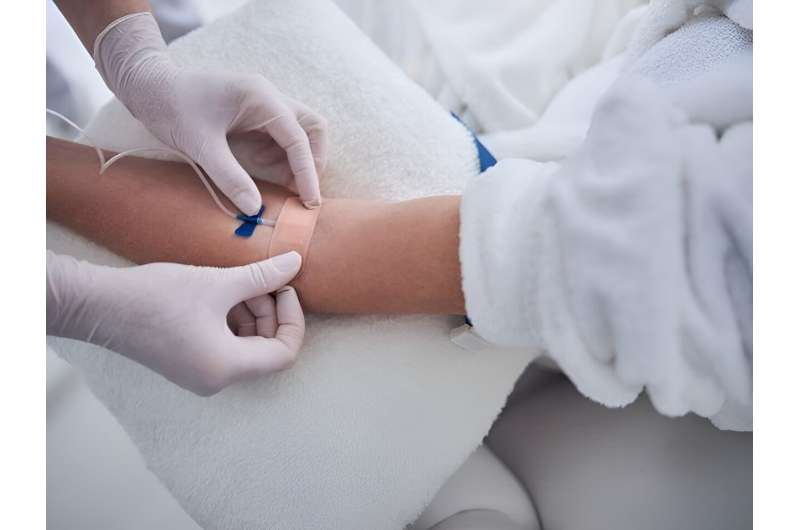This article has been reviewed according to Science X's editorial process and policies. Editors have highlighted the following attributes while ensuring the content's credibility:
fact-checked
reputable news agency
proofread
Subcutaneous securement system best for reaching end of PICC need

A subcutaneous anchor securement system (SASS) is superior for assisting oncology patients to reach the end of need with a single peripherally inserted central catheter (PICC), according to a study published online Aug. 1 in The Journal of Vascular Access.
Michelle L. Hawes, R.N., from Data to Wisdom Research Consulting in Bloomington, Indiana, and colleagues conducted a retrospective study to examine oncology patients' ability to finish their therapy with one PICC using implant and explant data for adult oncology patients from 2007 to 2021. All patients received a PICC with an adhesive securement device (ASD) or SASS.
The researchers found that partial or complete dislodgement causing unplanned PICC removal occurred for 12 and 0.4% of those with ASD and SASS, respectively. The probability of reaching the end of need with one PICC at two years was 68% and more than 95%, respectively, regardless of the reason for premature removal, with a significant difference between the two securement devices (P < 0.0001).
"Based on the evidence, the best instrument for securing a catheter throughout a patient's therapeutic need is the subcutaneous anchoring securement device," Hawes said in a statement.
More information: Michelle L Hawes et al, A retrospective study of subcutaneous anchor securement systems in oncology patients, The Journal of Vascular Access (2023). DOI: 10.1177/11297298231190416
2023 HealthDay. All rights reserved.


















